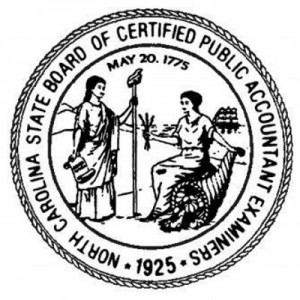Have you received all of the tax forms you expected?
by Cody Taylor
As we’re into February you should have received most if not all of the tax documents related to preparing your 2015 tax returns. This article in Forbes explains when various tax forms are due to you. What if you are missing some forms you were expecting?
It’s important to note that some forms may not be received in time to prepare your tax returns on time and you may require an extension as a result. The most common scenario is if you receive a Schedule K-1 from a pass-through entity. These entities have to file their tax returns before issuing you a Schedule K-1 which may not happen right away. As the article also says- your best course of action is to contact the K-1 issuer and find out when they expect the tax returns to be completed so you can plan your own tax filings accordingly.
If you haven’t received expected W-2s, 1099s or other forms that should have been received by now you have a few options available. The first and most obvious is to look back through any mail you have sitting around and to check your emails to see if you missed anything. We’ve all missed something the first time through only to have to document be sitting right there the whole time. However if the forms really are missing here are a few steps you can take as outlined here and summarized below.
- Contact the issuer – They may have simply mailed it to the wrong address, maybe you moved or your form got lost in the mail. Most issuers will be happy to send you a new copy, but keep in mind if they tell you it was sent and you did not receive it make sure to check that they have the correct address on file for you.
- Employer or Issuer has moved or closed – Still try to contact them. The income they paid you still should be reported on your tax returns and if they issued W-2s or 1099s in your Social Security number that are not reported on your tax returns the IRS will almost assuredly contact you about it.
- Still no forms by February 14th – If you are unable to resolve the missing information through the previous steps you can contact the IRS starting February 15th regarding missing forms. Try to have your address, phone number, Social Security Number, dates of employment, earnings estimate and federal withholdings amount on hand when you call the IRS. Your most recent pay stub is a good place to get this information. The IRS phone number is 1-800-829-1040 and I recommend trying to call first thing in the morning when the wait times are often shorter.
- Patience – The IRS will then contact the issuer to send you replacement forms but this is done through the mail and is usually not a fast process.
The good news is most of the time the issue of missing forms can be resolved rather painlessly, but if you find yourself missing important tax documents as it gets closer to filing time follow the above steps and contact the IRS, if necessary.
Cody ([email protected]) is a member of our tax staff at Langdon & Company LLP. He works with various types of clients on tax matters year-round. Please contact us to get more information on how we can help make your 2015 tax season, a smooth one.








 Wednesday, Thursday, and/or Friday by the following Wednesday.
Wednesday, Thursday, and/or Friday by the following Wednesday.

 Making the right call – Understanding that not all transactions are perfect, auditors must determine what differences or errors are material and force the auditor to alter their opinion on either the controls or financial statements. Likewise, officials are tasked to make sure that every game is played fairly. Some things, like a holding penalty, will not determine whether a game was played, as a whole, fairly or not but major issues might. An example of this would be like playing with deflated footballs. This would cause an unfair advantage and may cause the contest to come under question and possibly a forfeit. In short, a holding penalty would be the equivalent of a five dollar difference between the receipt and what was recorded in the books while playing with deflated footballs would be the equivalent of a material misstatement.
Making the right call – Understanding that not all transactions are perfect, auditors must determine what differences or errors are material and force the auditor to alter their opinion on either the controls or financial statements. Likewise, officials are tasked to make sure that every game is played fairly. Some things, like a holding penalty, will not determine whether a game was played, as a whole, fairly or not but major issues might. An example of this would be like playing with deflated footballs. This would cause an unfair advantage and may cause the contest to come under question and possibly a forfeit. In short, a holding penalty would be the equivalent of a five dollar difference between the receipt and what was recorded in the books while playing with deflated footballs would be the equivalent of a material misstatement.



 The ACH cost report software is also available online,
The ACH cost report software is also available online, 


 stakeholders, the FASB has delayed the effective date by one year. New effective dates are as follows:
stakeholders, the FASB has delayed the effective date by one year. New effective dates are as follows: